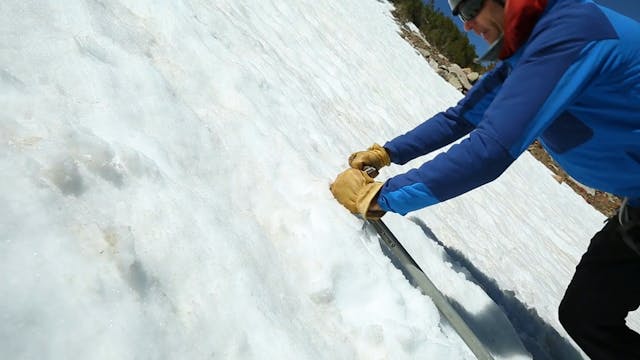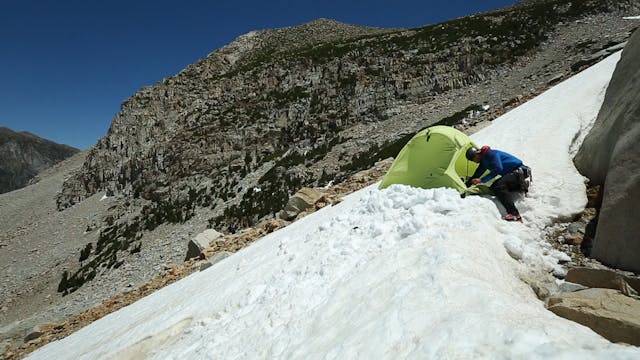Alpine: 19. Clothing Considerations
Alpine & Mountaineering
•
3m 16s
How do you dress for all the possible conditions you might encounter on an alpine climbing mission? In this video, we dive into layering clothes for alpine pursuits. You’ll notice that the clothes work as a system based on layers, that pack easily, dry fast, and that you can add or remove based on conditions/activities.
The upper body system may include up to 4-5 layers depending on the conditions.
Layer 1 - Also known as the base layer, this should include a short sleeve and/or long sleeve, breathable quick-drying material (synthetic or wool).
Layer 2 - This insulation layer should include a lightweight fleece that is breathable, yet warm and light.
Layer 3 - Soft shell jacket that can block wind, yet is breathable for high output activities.
Layer 4 - Insulated puffy jacket that is lightweight and packable. Consider heavier down depending on conditions, and synthetic insulation for wet environments.
Layer 5 - Wind shirt that is super light (3 oz) and blocks wind.
Layer 6 - Hard shell jacket. This is key for severe conditions or bad weather. You may leave this behind for summer missions in the Sierra Nevada—whereas if you’re climbing Mt. Rainier in July, you might never take it off. In most mountain ranges, a hard shell is absolutely necessary for safety.
Other miscellaneous clothing should include a warm hat, lightweight gloves (2 pair depending on conditions), a buff (protect from sun, wind, cold) and/or a balaclava.
Lower body clothing system should include a long underwear base layer, and a pair of soft shell pants. It can also include rain pants or gaiters depending on the conditions.
This system is not waterproof but it is water resistant and dries fast—solid for high output activities. Note: Each of the jackets should have hoods for additional warmth and protection from the elements.
The system you choose to use will vary based on conditions, environment and activity, but the goal is always to be thermally efficient.
We hope you found this video helpful. Feel free to comment below with questions or thoughts!
Please remember, climbing is inherently dangerous. Climb at your own risk.
Up Next in Alpine & Mountaineering
-
Alpine: 20. Staying Dry and Warm
In this video we talk about staying dry and warm in the mountain environment. Specifically, we will address layering and eating food.
Layering Clothes:
As in most outdoor sports, layering for activity is essential. With alpinism, one moves from periods of high exertion (where you expend hug...
-
Alpine: 21. Food & Water Considerations
In this video we discuss food and water options for mountaineering.
People often default to dehydrated packaged meals, but they can take a very long time to rehydrate at higher elevations, and above 15,000 feet some companies say you will have to boil the meal for as long as 20 minutes.
Re... -
Alpine: 22. Base Camp Considerations
In this video we look at how to choose an alpine basecamp. When selecting a base camp area, there are a four main considerations:
1. Proximity to your objectives
2. Access to water
3. Sun exposure
4. Wind protectionAnd below are a few tips related to each of the four main consideratio...


